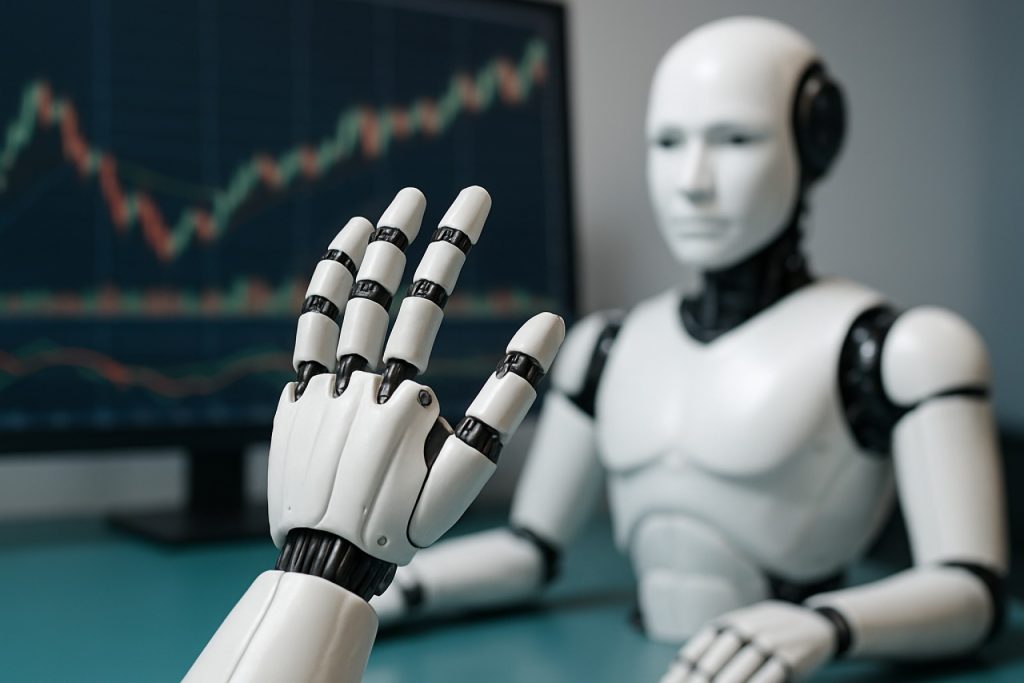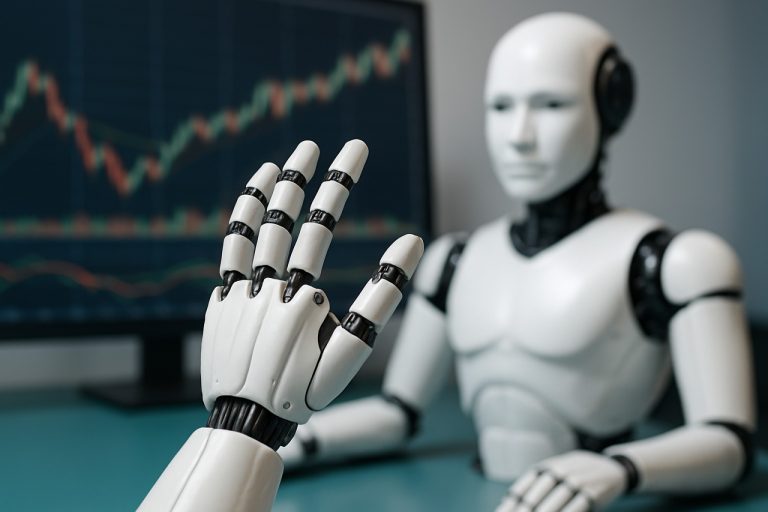
Bioinspired Robotics Industry Report 2025: Market Dynamics, Growth Projections, and Strategic Insights. Explore Key Trends, Regional Opportunities, and the Competitive Landscape Shaping the Next 5 Years.
- Executive Summary & Market Overview
- Key Technology Trends in Bioinspired Robotics
- Competitive Landscape and Leading Players
- Market Growth Forecasts (2025–2030): CAGR, Revenue, and Volume Analysis
- Regional Market Analysis: North America, Europe, Asia-Pacific, and Rest of World
- Future Outlook: Emerging Applications and Investment Hotspots
- Challenges, Risks, and Strategic Opportunities
- Sources & References
Executive Summary & Market Overview
Bioinspired robotics is an interdisciplinary field that designs and develops robotic systems modeled after biological organisms and processes. By emulating the structures, functions, and adaptive behaviors found in nature, bioinspired robots aim to achieve enhanced efficiency, flexibility, and resilience compared to traditional robotic systems. In 2025, the global bioinspired robotics market is experiencing robust growth, driven by advances in materials science, artificial intelligence, and sensor technologies, as well as increasing demand for automation in sectors such as healthcare, manufacturing, agriculture, and defense.
According to MarketsandMarkets, the bioinspired robotics market is projected to reach USD 3.2 billion by 2025, growing at a CAGR of over 20% from 2020. This growth is fueled by the need for robots capable of operating in complex, unstructured environments—tasks where traditional rigid robots often fall short. Bioinspired designs, such as soft robots mimicking octopus arms or drones inspired by bird flight, are enabling new applications in search and rescue, minimally invasive surgery, environmental monitoring, and precision agriculture.
Key industry players, including Boston Dynamics, Festo, and Sony Corporation, are investing heavily in R&D to commercialize bioinspired robotic solutions. For example, Festo’s bionic robots, such as the BionicFinWave and BionicSoftHand, demonstrate the potential for flexible, adaptive automation in industrial settings. Meanwhile, academic institutions and research consortia, such as the Harvard University Wyss Institute, are pioneering breakthroughs in soft robotics and biohybrid systems.
Regionally, North America and Europe lead the market, supported by strong research ecosystems and government funding for robotics innovation. However, Asia-Pacific is rapidly emerging as a key growth region, with countries like Japan, South Korea, and China investing in bioinspired robotics for aging populations and advanced manufacturing (International Federation of Robotics).
In summary, the bioinspired robotics market in 2025 is characterized by rapid technological progress, expanding application domains, and increasing collaboration between academia and industry. As the field matures, bioinspired robots are expected to play a transformative role in addressing complex real-world challenges across multiple sectors.
Key Technology Trends in Bioinspired Robotics
Bioinspired robotics, a field that draws design principles from biological systems to develop advanced robotic solutions, is experiencing rapid technological evolution as of 2025. Several key trends are shaping the landscape, driven by advances in materials science, artificial intelligence, and interdisciplinary research.
- Soft Robotics and Smart Materials: The integration of soft, flexible materials inspired by organisms such as octopuses and worms is enabling robots to perform delicate tasks and navigate complex environments. Innovations in electroactive polymers and shape-memory alloys are allowing for more lifelike movement and adaptability, as seen in recent prototypes from Harvard University and Massachusetts Institute of Technology.
- Biohybrid Systems: Researchers are increasingly combining living cells or tissues with synthetic components to create biohybrid robots. These systems, such as muscle-powered microbots and bioactuated swimmers, offer enhanced efficiency and novel functionalities. Notable progress has been reported by RIKEN and Stanford University in developing robots that leverage biological muscle tissue for actuation.
- Neuromorphic and Adaptive Control: Inspired by animal nervous systems, neuromorphic computing architectures are being implemented to enable real-time learning and adaptive behavior in robots. This trend is particularly evident in autonomous navigation and manipulation tasks, with companies like Intel Corporation and NVIDIA Corporation investing in neuromorphic chips and AI frameworks tailored for robotics.
- Swarm Robotics: Drawing inspiration from collective behaviors in nature (e.g., ant colonies, bird flocks), swarm robotics is advancing through improved algorithms and communication protocols. These systems are being deployed for environmental monitoring, search and rescue, and agricultural applications, as demonstrated by projects at École Polytechnique Fédérale de Lausanne (EPFL) and CSIRO.
- Energy Efficiency and Self-Healing: Mimicking biological energy management and repair mechanisms, new robots are being designed with self-healing polymers and energy-harvesting capabilities. This enhances operational longevity and reduces maintenance, with significant research contributions from University of Cambridge and Delft University of Technology.
These trends are collectively pushing bioinspired robotics toward greater autonomy, resilience, and versatility, positioning the sector for expanded adoption across healthcare, manufacturing, and environmental sectors in 2025 and beyond.
Competitive Landscape and Leading Players
The competitive landscape of the bioinspired robotics market in 2025 is characterized by a dynamic mix of established robotics firms, innovative startups, and research-driven collaborations. The sector is witnessing rapid advancements, with companies leveraging biological principles to develop robots that exhibit enhanced adaptability, efficiency, and resilience. Key players are focusing on applications across healthcare, manufacturing, defense, and environmental monitoring, driving both technological innovation and commercial adoption.
Among the leading players, Boston Dynamics remains at the forefront, renowned for its quadruped and humanoid robots that mimic animal and human locomotion. The company’s Spot robot, inspired by canine movement, has seen increased deployment in industrial inspection and public safety. Festo is another major innovator, with its Bionic Learning Network producing robots inspired by animals such as octopuses, birds, and insects, targeting automation and logistics sectors.
In the healthcare domain, Intuitive Surgical and Medtronic are integrating bioinspired mechanisms into surgical robots, enhancing dexterity and precision. Startups like Soft Robotics Inc. are gaining traction with grippers and manipulators modeled after the flexibility of biological tissues, enabling delicate handling in food processing and e-commerce fulfillment.
Academic and research institutions play a pivotal role, often partnering with industry to commercialize breakthroughs. For instance, the Harvard University Wyss Institute has spun out several ventures focused on soft robotics and bioinspired actuation. Similarly, the Imperial College London and Massachusetts Institute of Technology (MIT) are active in developing robotic systems inspired by marine and terrestrial animals, with applications in exploration and disaster response.
Geographically, North America and Europe dominate the market, driven by robust R&D ecosystems and strong venture capital activity. However, Asia-Pacific is rapidly emerging, with companies like FANUC and Hitachi investing in bioinspired automation for manufacturing and logistics.
Overall, the competitive landscape in 2025 is marked by intense innovation, strategic partnerships, and a growing emphasis on translating bioinspired concepts into scalable, real-world solutions. The interplay between established leaders and agile startups is expected to accelerate the commercialization of bioinspired robotics across diverse industries.
Market Growth Forecasts (2025–2030): CAGR, Revenue, and Volume Analysis
The bioinspired robotics market is poised for robust expansion between 2025 and 2030, driven by advancements in artificial intelligence, materials science, and the growing demand for automation across diverse sectors. According to projections by MarketsandMarkets, the global bioinspired robotics market is expected to register a compound annual growth rate (CAGR) of approximately 22% during this period. This rapid growth is attributed to increasing investments in research and development, as well as the adoption of bioinspired robots in healthcare, agriculture, defense, and industrial automation.
Revenue forecasts indicate that the market, valued at around USD 2.1 billion in 2025, could surpass USD 5.6 billion by 2030. This surge is underpinned by the integration of bioinspired robots in surgical procedures, rehabilitation, and precision agriculture, where their adaptability and efficiency offer significant advantages over traditional robotic systems. The Asia-Pacific region, led by China, Japan, and South Korea, is anticipated to witness the highest growth rates, fueled by government initiatives and a strong manufacturing base. North America and Europe will continue to be significant contributors, driven by technological innovation and early adoption in sectors such as defense and healthcare.
In terms of volume, the number of bioinspired robotic units deployed globally is projected to increase substantially, with annual shipments expected to grow from approximately 45,000 units in 2025 to over 120,000 units by 2030. This volume growth is particularly notable in the field of soft robotics, where bioinspired designs are enabling new applications in delicate object handling and minimally invasive surgery. The proliferation of collaborative robots (cobots) with bioinspired features is also expected to accelerate, especially in small and medium-sized enterprises seeking flexible automation solutions.
Key market drivers include the rising need for robots capable of operating in unstructured environments, the push for sustainable and energy-efficient automation, and the expanding scope of bioinspired robotics in emerging fields such as environmental monitoring and disaster response. As a result, the market landscape is expected to become increasingly competitive, with established players and startups alike investing in novel designs and intelligent control systems to capture a share of this high-growth sector IDTechEx.
Regional Market Analysis: North America, Europe, Asia-Pacific, and Rest of World
The global bioinspired robotics market is experiencing robust growth, with regional dynamics shaped by technological innovation, investment patterns, and sector-specific demand. In 2025, North America, Europe, Asia-Pacific, and the Rest of the World (RoW) each present distinct opportunities and challenges for bioinspired robotics adoption and commercialization.
- North America: North America remains a leader in bioinspired robotics, driven by strong R&D ecosystems, significant government funding, and the presence of major technology companies and research institutions. The United States, in particular, is at the forefront, with organizations such as DARPA and National Science Foundation supporting advanced robotics research. The region’s focus on defense, healthcare, and industrial automation accelerates the deployment of bioinspired robots, including soft robotics and autonomous systems. According to Grand View Research, North America accounted for over 35% of the global market share in 2024, a trend expected to continue in 2025.
- Europe: Europe is characterized by a collaborative research environment and strong regulatory frameworks supporting robotics innovation. The European Union’s Horizon Europe program funds numerous bioinspired robotics projects, particularly in healthcare, agriculture, and environmental monitoring. Countries like Germany, the UK, and France are leading adopters, with a focus on integrating robotics into manufacturing and sustainability initiatives. The region’s emphasis on ethical AI and robotics standards also shapes market development.
- Asia-Pacific: Asia-Pacific is the fastest-growing region for bioinspired robotics, propelled by rapid industrialization, government initiatives, and a burgeoning consumer electronics sector. Japan, South Korea, and China are at the forefront, investing heavily in robotics for manufacturing, eldercare, and disaster response. According to MarketsandMarkets, Asia-Pacific is projected to witness a CAGR exceeding 15% through 2025, outpacing other regions due to aggressive adoption and local innovation.
- Rest of World (RoW): The RoW segment, including Latin America, the Middle East, and Africa, is in the early stages of bioinspired robotics adoption. Growth is driven by increasing awareness, pilot projects in agriculture and mining, and international collaborations. However, limited infrastructure and funding remain key challenges. Strategic partnerships with global technology providers are expected to accelerate market entry and technology transfer in these regions.
Overall, while North America and Europe lead in innovation and early adoption, Asia-Pacific’s rapid growth and the emerging potential in RoW regions are reshaping the global landscape for bioinspired robotics in 2025.
Future Outlook: Emerging Applications and Investment Hotspots
Bioinspired robotics, which draws design principles from biological systems to create more adaptive, efficient, and resilient machines, is poised for significant growth and diversification in 2025. The convergence of advanced materials, artificial intelligence, and miniaturization is enabling new applications across sectors such as healthcare, agriculture, environmental monitoring, and defense.
One of the most promising emerging applications is in medical robotics. Bioinspired soft robots, modeled after organisms like octopuses and worms, are being developed for minimally invasive surgery and targeted drug delivery. These robots offer enhanced dexterity and safety compared to traditional rigid devices, and several startups and research institutions are attracting venture capital for clinical trials and commercialization. For example, the European Union’s STORM Lab is advancing soft robotic endoscopes for gastrointestinal procedures, with pilot deployments expected in 2025.
In agriculture, bioinspired robots are being designed to mimic insects and birds for pollination, crop monitoring, and precision pesticide application. Companies like Festo are developing robotic bees and butterflies, which are anticipated to enter field trials in 2025, addressing labor shortages and sustainability challenges in large-scale farming.
Environmental monitoring is another investment hotspot. Swarm robotics, inspired by the collective behavior of ants and fish, is enabling distributed sensor networks for real-time data collection in oceans, forests, and urban environments. The NASA Ames Research Center is piloting bioinspired underwater robots for coral reef health assessment, with commercial partnerships expected to expand in 2025.
Defense and security applications are also attracting significant funding. Bioinspired drones and autonomous vehicles, modeled after birds of prey and insects, offer stealth, agility, and energy efficiency. The U.S. Department of Defense’s DARPA Biologically Inspired Dynamic Robotics program is expected to announce new contracts in 2025 for next-generation reconnaissance and search-and-rescue robots.
Investment is flowing into these hotspots from both public and private sources. According to IDTechEx, the global market for bioinspired robotics is projected to exceed $3.5 billion by 2025, with healthcare and agriculture leading in revenue growth. As technical barriers fall and regulatory pathways clarify, 2025 is set to be a pivotal year for commercialization and scale-up in bioinspired robotics.
Challenges, Risks, and Strategic Opportunities
Bioinspired robotics, which draws design and functional inspiration from biological systems, faces a complex landscape of challenges and risks as it advances toward broader commercialization and adoption in 2025. One of the primary challenges is the translation of biological principles into robust, manufacturable, and cost-effective robotic systems. Biological organisms often exhibit intricate, highly optimized structures and behaviors that are difficult to replicate with current materials and engineering techniques. This gap leads to significant R&D costs and extended development timelines, as seen in the efforts of leading research institutions and companies such as Boston Dynamics and Festo.
Another major risk is the reliability and durability of bioinspired robots in real-world environments. Many prototypes perform well in controlled laboratory settings but struggle with unpredictable variables in industrial, medical, or field applications. This reliability gap can hinder market adoption, especially in sectors with stringent safety and performance requirements, such as healthcare and autonomous vehicles. Additionally, the integration of soft robotics—an area closely tied to bioinspired design—poses unique challenges in terms of control algorithms, sensor integration, and power supply, as highlighted by recent studies from IEEE and IDTechEx.
Intellectual property (IP) risks also loom large. The interdisciplinary nature of bioinspired robotics means that innovations often straddle the boundaries of biology, engineering, and computer science, complicating patent landscapes and increasing the risk of IP disputes. Furthermore, ethical and regulatory uncertainties—particularly in medical and surveillance applications—can delay deployment and create additional compliance costs.
Despite these challenges, strategic opportunities abound. The growing demand for automation in sectors such as logistics, agriculture, and healthcare is driving investment in bioinspired solutions that offer superior adaptability and efficiency compared to traditional robots. For example, the agricultural robotics market is projected to reach $20.6 billion by 2025, with bioinspired designs playing a key role in crop monitoring and harvesting (MarketsandMarkets). Strategic partnerships between academia, industry, and government agencies are accelerating technology transfer and commercialization, as evidenced by initiatives from DARPA and the European Commission’s CORDIS program.
In summary, while bioinspired robotics faces significant technical, regulatory, and market risks, the sector’s potential to revolutionize automation and address unmet needs across industries presents compelling strategic opportunities for innovators and investors in 2025.
Sources & References
- MarketsandMarkets
- Harvard University
- International Federation of Robotics
- Massachusetts Institute of Technology
- RIKEN
- Stanford University
- NVIDIA Corporation
- École Polytechnique Fédérale de Lausanne (EPFL)
- CSIRO
- University of Cambridge
- Delft University of Technology
- Boston Dynamics
- Intuitive Surgical
- Medtronic
- Soft Robotics Inc.
- Imperial College London
- FANUC
- Hitachi
- IDTechEx
- DARPA
- National Science Foundation
- Grand View Research
- Horizon Europe
- STORM Lab
- NASA Ames Research Center
- IEEE



